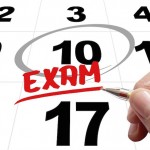Tips on improving your writing skills

Writing is much more than just putting what you say on a piece of paper. Writing is more formal than speaking and must follow certain rules. These rules are about how to organize your writing. For example, in an informative piece of writing, you should start with an introduction, followed by a development of your topic, and end with a summary. In the introduction you tell them what you’re going to tell them, in the development you tell them, and in the summary you tell them what you told them. Each paragraph in your composition should have a single point and start with a topic sentence followed by supporting details, and finish with a concluding sentence that summarizes the paragraph and transitions to the following paragraph where you do the same thing. Your overall organization can vary from general to specific, where you give a general statement and follow with details and examples, or the opposite way of specific to general, where you give details and examples followed by a generalization. You can also go from known to unknown, where you start with something the reader already knows and end with something they don’t know. Another way to organize your writing is to go from least important to most important. Lastly, you can give a chronology where you start with the first thing that happens and end with the last thing that happens. In other kinds of writing such as an email or a letter, you should have an opening with a greeting, a body with your important information, and a closing.
Reading English can give you good examples of organization and also samples of different kinds of sentences. A good piece of writing should have all four kinds of sentences: simple, compound, complex and compound-complex. If you don’t use all these kinds of sentences, your writing seems boring and uninteresting.
Although you see what good writing is when you read, there’s no easy way to improve your writing than by doing some writing yourself. You need to practice writing daily to get better at it. It’s a good idea to keep all your writing in one place, such as a notebook, so you can review it and see improvement over time.
Following are some things you can do to improve your writing.
- Plan what you’re going to write. Pick a topic and make a short outline, which will make your writing more organized and keep you on track.
- When you’ve written all that you’re going to write, read it over and make revisions in a second draft. These revisions include better choice of vocabulary, different sentence structure, and correct use of punctuation.
- Share your writing. When you’re finished with a piece of writing, show it to a native speaker and get some feedback. You can also share it online in a blog that you use regularly, such as www.blogger.com. There are also websites where you can have your writing corrected by native speakers, such as www.lang-8.com.
- Keep a journal. If you’re not ready to share your writing, then start a daily journal. Write about your experiences of the day or whatever is on your mind. Do this before you go to sleep at night or first thing in the morning so it becomes a habit. It doesn’t matter so much what you write as long as you write something every day. Although it may be difficult in the beginning, after a while it becomes easier. Don’t worry about making mistakes. Mistakes are how you learn and are perfectly natural in the beginning.
- Go on a forum, which is an online discussion site. No matter what you’re interested in, there’s a forum for that. Go to Google and type in “biking forum,” for example, to find people interested in bicycling.
- Get a pen pal. A pen pal is someone you write to on a regular basis, such as every week. Two good websites for pen pals are PenPal World and InterPals.
Whatever you choose to do to improve your writing, get started now. What are you going to do today to get started? Are you going to get a pen pal, join a forum, start a journal? Start writing now and keep it up. In a few weeks you’ll be amazed at the improvements in your writing, and you’ll be more confident in your ability. Remember not to worry about perfect grammar. That will improve later. First you want to make writing a habit that you do every day.
Vocabulary:
informative: giving information
summary: review
composition: writing
point: sub-topic, division of a topic
topic: the subject of your writing
concluding: last
transitions: goes from one thing to another, ties together
overall: general
vary: change
specific: detailed (opposite of “general”)
generalization: a statement that includes everything
chronology: in the order of time
greeting: saying hello
closing: saying goodbye
compound: two independent clauses joined with “and,” “but,” “or,” etc.
complex: an independent clause joined with a dependent clause
outline: the basic things you’re going to write about
revisions: corrections, improvements
second draft: a rewriting with revisions
punctuation: periods, commas, etc.
native speaker: someone who has spoken English all their lives
feedback: ideas for improvement
blog: online personal writing that you share with everyone
journal: a book that you write in every day
on your mind: you’re thinking about
habit: something you do all the time because you’re used to it
as long as: if
keep it up: continue doing it
confident: sure of yourself








